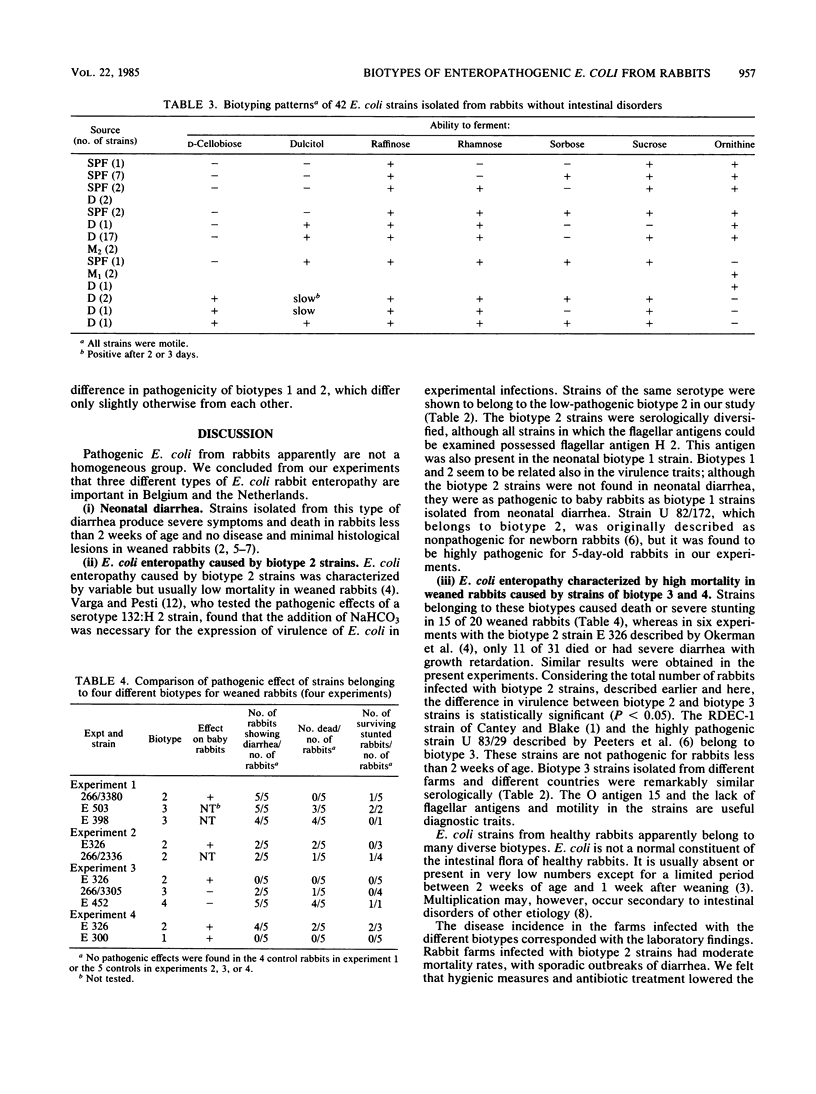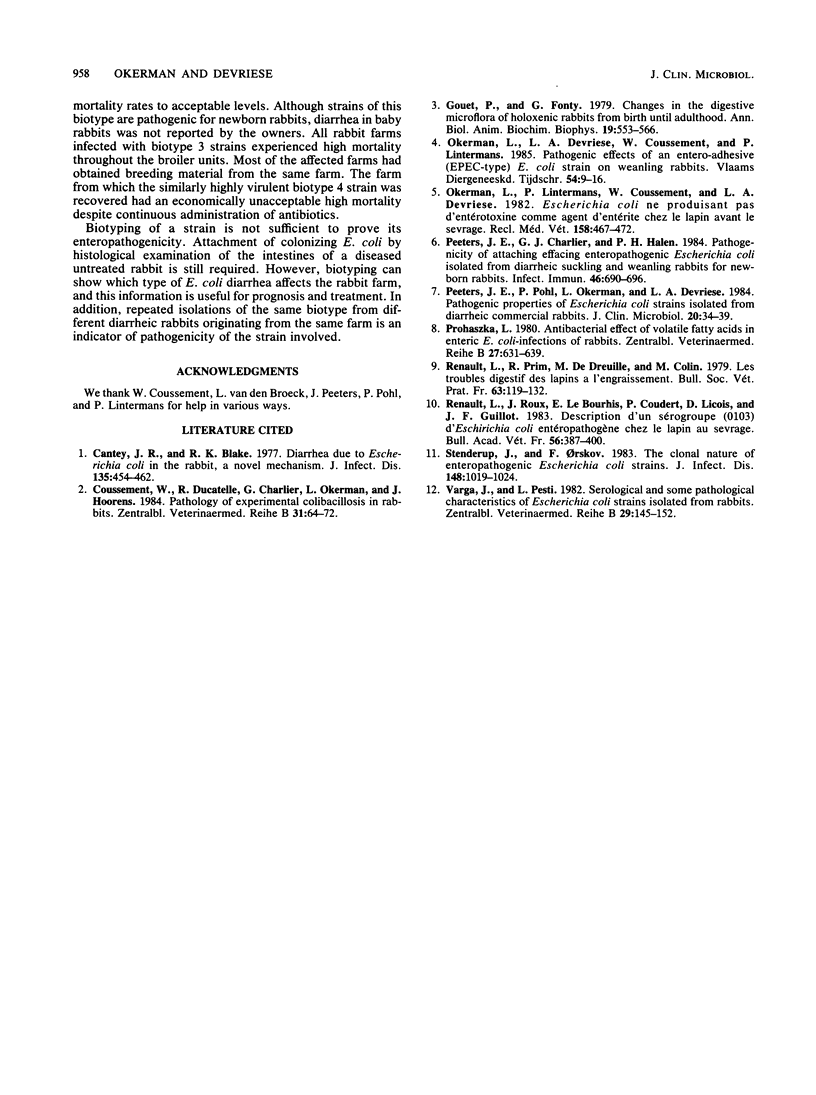Abstract
Forty-five enteropathogenic (enteropathogenic Escherichia coli-like) strains isolated in commercial rabbit farms were subdivided into four biotypes with the help of six carbohydrate fermentation tests, ornithine decarboxylase tests, and motility tests. E. coli strains which caused neonatal diarrhea in baby rabbits belonged to a single biotype, biotype 1, and displayed the same serotype antigens. Biotype 2 strains provoked diarrhea of variable severity in weaned rabbits and were also pathogenic for baby rabbits under laboratory conditions. Biotype 1 and biotype 2 strains resembled each other in many respects. Biotype 3 and biotype 4 (represented by a single strain) were highly pathogenic for weaned rabbits, but they provoked no symptoms or lesions in baby rabbits. Biotype 3 formed a homogeneous group of nonmotile strains which possessed the O15 antigen. Forty-two strains from nondiarrheic rabbits constituted a very heterogeneous collection of biotypes, most of which could easily be differentiated from the pathogenic types. Biotyping can be used to recognize rabbit pathogenic strains.
Full text
PDF



Selected References
These references are in PubMed. This may not be the complete list of references from this article.
- Cantey J. R., Blake R. K. Diarrhea due to Escherichia coli in the rabbit: a novel mechanism. J Infect Dis. 1977 Mar;135(3):454–462. doi: 10.1093/infdis/135.3.454. [DOI] [PubMed] [Google Scholar]
- Coussement W., Ducatelle R., Charlier G., Okerman L., Hoorens J. Pathology of experimental colibacillosis in rabbits. Zentralbl Veterinarmed B. 1984 Feb;31(1):64–72. doi: 10.1111/j.1439-0450.1984.tb01282.x. [DOI] [PubMed] [Google Scholar]
- Peeters J. E., Charlier G. J., Halen P. H. Pathogenicity of attaching effacing enteropathogenic Escherichia coli isolated from diarrheic suckling and weanling rabbits for newborn rabbits. Infect Immun. 1984 Dec;46(3):690–696. doi: 10.1128/iai.46.3.690-696.1984. [DOI] [PMC free article] [PubMed] [Google Scholar]
- Peeters J. E., Pohl P., Okerman L., Devriese L. A. Pathogenic properties of Escherichia coli strains isolated from diarrheic commercial rabbits. J Clin Microbiol. 1984 Jul;20(1):34–39. doi: 10.1128/jcm.20.1.34-39.1984. [DOI] [PMC free article] [PubMed] [Google Scholar]
- Prohászka L. Antibacterial effect of volatile fatty acids in enteric E. coli-infections of rabbits. Zentralbl Veterinarmed B. 1980;27(8):631–639. doi: 10.1111/j.1439-0450.1980.tb01726.x. [DOI] [PubMed] [Google Scholar]
- Stenderup J., Orskov F. The clonal nature of enteropathogenic Escherichia coli strains. J Infect Dis. 1983 Dec;148(6):1019–1024. doi: 10.1093/infdis/148.6.1019. [DOI] [PubMed] [Google Scholar]
- Varga J., Pesti L. Serological and some pathological characteristics of Escherichia coli strains isolated from rabbits. Zentralbl Veterinarmed B. 1982 Mar;29(2):145–152. doi: 10.1111/j.1439-0450.1982.tb01209.x. [DOI] [PubMed] [Google Scholar]


